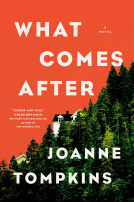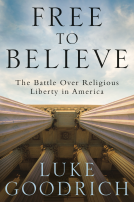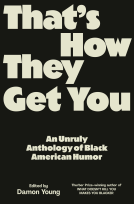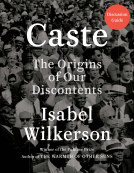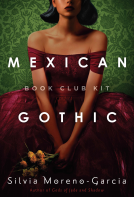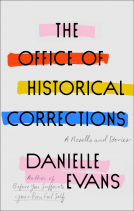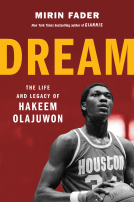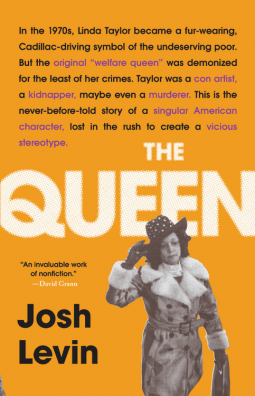
The Queen
The Forgotten Life Behind an American Myth
by Josh Levin
This title was previously available on NetGalley and is now archived.
Send NetGalley books directly to your Kindle or Kindle app
1
To read on a Kindle or Kindle app, please add kindle@netgalley.com as an approved email address to receive files in your Amazon account. Click here for step-by-step instructions.
2
Also find your Kindle email address within your Amazon account, and enter it here.
Pub Date May 21 2019 | Archive Date Aug 21 2019
Description
On the South Side of Chicago in 1974, Linda Taylor reported a phony burglary, concocting a lie about stolen furs and jewelry. The detective who checked it out soon discovered she was a welfare cheat who drove a Cadillac to collect ill-gotten government checks. And that was just the beginning: Taylor, it turned out, was also a kidnapper, and possibly a murderer. A desperately ill teacher, a combat-traumatized Marine, an elderly woman hungry for companionship-after Taylor came into their lives, all three ended up dead under suspicious circumstances. But nobody-not the journalists who touted her story, not the police, and not presidential candidate Ronald Reagan-seemed to care about anything but her welfare thievery.
Growing up in the Jim Crow South, Taylor was made an outcast because of the color of her skin. As she rose to infamy, the press and politicians manipulated her image to demonize poor black women. Part social history, part true-crime investigation, Josh Levin's mesmerizing book, the product of six years of reporting and research, is a fascinating account of American racism, and an expose of the "welfare queen" myth, one that fueled political debates that reverberate to this day. THE QUEEN tells, for the first time, the fascinating story of what was done to Linda Taylor, what she did to others, and what was done in her name.
"THE QUEEN is a wild, only-in-America story that helped me understand my country better. It's a fascinating portrait of a con artist and a nation... and the ways the United States continually relies on oversimplified narratives about race and class to shape public policy, almost always at the expense of brown people and poor people." (Attica Locke, author of the Edgar Award winning Bluebird, Bluebird)
Advance Praise
"It's about Linda Taylor, the 'Cadillac-driving welfare queen in Chicago'' that Pres. Reagan referenced in a 1983 speech about rampant defrauding of government anti-poverty programs...Her story helped popularize stereotype about lazy Black people on the dole...But the focus on her welfare grifting meant people mostly ignored the more sinister crimes she was implicated in - like kidnappings and murders! Anyway, it's a wild book." —Gene Demby, NPR Books
"An upcoming biography by journalist Josh Levin about Linda Taylor, the Chicago woman whose complicated story was demonized and manipulated by politicians and press (namely, the Chicago Tribune, according to Levin's account) until she was Ronald Reagan's infamous 'welfare queen'...It's tempting to describe Levin's masterful book as alternate history of 1980s Chicago. But no - again, it's this Chicago, on this planet, not twisted on its head, only righted." —Christopher Borrelli, The Chicago Tribune
"In the finest tradition of investigative reporting, Josh Levin exposes how a story that once shaped the nation's conscience was clouded by racism and lies. As he stunningly reveals, the deeper truth, the messy truth, tells us something much larger about who we are. The Queen is an invaluable work of nonfiction." —David Grann, #1 New York Times bestselling author of Killers of the Flower Moon
"The Queen is a wild, only-in-America story that helped me understand my country better. It's a fascinating portrait of a con artist and a nation... and the ways the United States continually relies on oversimplified narratives about race and class to shape public policy, almost always at the expense of brown people and poor people." —Attica Locke, author of the Edgar Award winning Bluebird, Bluebird
"For decades, Linda Taylor has been demagogued by politicians and the press, reduced to a cruel stereotype: the welfare queen shamelessly leeching from government coffers. Through meticulous reporting, Josh Levin's The Queen illuminates in full the story of a life far more complicated, cunning, criminal, tragic and fascinating than the historical stereotype would have ever allowed us to see." —Wesley Lowery, author of They Can't Kill Us All
Available Editions
| EDITION | Other Format |
| ISBN | 9780316513302 |
| PRICE | $29.00 (USD) |
| PAGES | 432 |
Featured Reviews
 janet k, Librarian
janet k, Librarian
If youre looking for books that will help explain how we got to the current political climate we reside in, you would do well to pick up Josh Levin's The Queen. At it's core it is the biography of Constance Loyd/Linda Taylor whom Ronald Reagan touted as the Welfare Queen. This book is so much more. It's a commentary on the political and social climate of that time and it plots the course for readers to where we are today. Though welfare fraud is what brought Constance to the American stage, her crimes are myriad and complex, as was her life. Josh Levin brought her to life for me, and I found her riveting and fascinating. I wanted to talk about what I'd read, and I think The Queen would make an excellent book discussion selection. The Queen reads like a novel. I appreciated the obvious extensive research. I commend Josh Levin. well done!
I received my copy through NetGalley under no obligation.
Wow what a book! Josh Levin tackles a very heated topic with The Queen. As a child of the 80s and growing up in a city I remember the hot topic of welfare. Then durning college some of my high school friends had to get on welfare to help with their families. So this book kept my interest through out. Josh writes about Constance Loyd/ Linda Taylor who was deemed the Welfare Queen by then president Ronald Regan. Now the Queen became infamous because of welfare fraud but wow I found her to be so interesting and so much more than the label she was given.
The Queen is a must read! This book was amazing and I think that it really sheds light on where the social climate of today stemmed from.
 Jeremy L, Media/Journalist
Jeremy L, Media/Journalist
The federal government declared a war on poverty, and poverty won,” Ronald Reagan said during his final State of the Union address, in 1988. This wasn’t an economic critique so much as an indictment of bureaucracy run amok. Since at least the mid-1960s, Reagan and the GOP had often portrayed the poor—especially those in urban communities of color—as freeloaders and con artists, the bottom feeders of Lyndon Johnson’s Great Society, whose food stamps and welfare benefits supposedly bilked taxpayers out of hard-earned dollars. These portrayals were usually couched in euphemisms and dog whistles. In 1961, Barry Goldwater lamented that public aid was “paid for children born out of wedlock.” Goldwater’s supporters (including Reagan) surely didn’t take this as a smear against young white Protestant mothers; no, this moral rot was understood as endemic among a specific community: black, inner-city mothers who were already suspect in the conservative cultural imagination.
In 1976, Reagan repeatedly invoked his own female bête noire as he barnstormed the country in a doomed bid to primary President Gerald Ford. There’s a woman in Chicago, Reagan told voters, who “used eighty names, thirty addresses, fifteen telephone numbers to collect food stamps, Social Security, veterans’ benefits for four non-existent deceased veteran husbands, as well as welfare.” And she wasn’t the only one. Reagan bemoaned a welfare system infested with fraud, although he kept returning to the woman in Chicago. She wore a fur coat. She drove a Cadillac. She paid for T-bone steaks with food stamps. He didn’t refer to her by name but by a sobriquet—one he didn’t invent, but which he repeated so often it metastasized into an ugly stereotype: She was the welfare queen.
The bogeywoman in Chicago was named Linda Taylor. At least, that’s what she frequently called herself; she had as many as 54 aliases. In his new book The Queen: The Forgotten Life Behind an American Myth, Josh Levin, an editor at Slate, tracks Taylor’s ever-shifting identities as she lies, cheats, and perhaps even murders her way toward the good life. The book is part biography, part true-crime saga, and part sociological study of how race, class, and media collide. “Before Taylor, the fur-coat-wearing, luxury-car-buying public aid chiseler had been something akin to the abominable snowman,” Levin writes. “Taylor’s mere existence gave credence to a slew of pernicious stereotypes about poor people and black women. If one welfare queen walked the earth, then surely others did, too.”
In recounting Taylor’s life, Levin also examines how one person’s perceived transgression can exemplify, or amplify, national anxieties. US history is rife with such examples: Lorena Bobbitt, Monica Lewinsky, Patty Hearst—women who, despite their different circumstances, became stand-ins (and scapegoats) for epoch-defining conversations around sex, gender, and class. Reagan and the media turned Taylor into a pariah, but, as Levin indicates, she was only one vivid entry in a long tradition of American scammers. The irony is the welfare fraud that made her infamous may have been her least offensive crime. Levin’s book raises thorny questions about victimhood: At times Taylor is a savvy antihero who subverted a racist economy and red tape to live the high life; at other times, she is the dishonest, pathological, perhaps even homicidal shape-shifter who was never fully brought to justice.
As Levin tells it, Taylor was born in Tennessee in 1926 to a white mother and a black father. Her skin was light enough that acquaintances later assumed she was white, or Latina, or Hawaiian, or Native American. Her career in crime started early. She left home as a teenager, bound for the Pacific Coast, where the Second Great Migration was bringing black Southerners to port cities. She was arrested three times in Seattle before the age of 20, charged with vagrancy, disorderly conduct, and prostitution. In 1948 in Oakland, she was arrested for contributing to the delinquency of a minor (code for having sex in the presence of a child). She gave police a different name and birth date each time she was booked. In the meantime, she married—and divorced—twice, and had five children. (Taylor married six times in total.) She also drifted around the country, from the West Coast to Arkansas. In the late 1950s, she helped a family of poor black sharecroppers relocate from Arkansas to Illinois. Their friendship ended in disillusionment after Taylor filed a bogus lawsuit against the Peoria Board of Education over a gas leak that had allegedly injured her children. At some point in the late ’50s or early ’60s, Taylor moved to Chicago, about two and a half hours northeast of Peoria.
Taylor orchestrated more scams throughout the ’60s and was even a suspect in the 1964 kidnapping of Paul Joseph Fronczak, a baby taken from a Chicago hospital by a mysterious woman in white. Her most audacious scheme was posing as the daughter—and sole heiress—of a South Side gambling tycoon who’d squirreled a fortune in his basement. During the heirship hearing, Taylor’s own mother testified that her daughter was a charity case: Taylor had been abandoned on her doorstep as a 3-month-old infant and was subsequently christened Martha Louise White. This was a lie, though, perhaps meant to deflect the truth that Taylor was biracial and had been conceived in Alabama, where miscegenation was a felony until 2000. “No one wanted to lay claim to Martha Louise White,” Levin writes. “It was a fact she understood from the time she was a very small child.”
Taylor’s Southern roots offer Levin a convenient segue into that region’s economic history, which is also the de facto history of welfare and its racist stigma. The socioeconomic structure of the Jim Crow South was designed to keep black people impoverished and indebted; even in the 20th century, black farmworkers were indentured servants. The Red Summer riots of 1919, in which whites attacked and killed hundreds of black people across the country, was a paroxysm of racial violence that reinforced an already explicit culture of fear. The Great Migration afforded scant relief. As Levin notes, segregation was baked into urban planning. The housing projects of Chicago and West Oakland, for example, were concrete variations on the shanties and tin-roofed shacks that many black Americans had hoped to leave behind.
The South also incubated massive federal-aid programs. The Great Mississippi Flood of 1927 and a devastating drought in Arkansas in 1930 required national interventions, which “primed the nation to support Franklin Roosevelt’s New Deal,” Levin argues, including the Aid to Dependent Children program. As early as 1933, newspapers were fixated on the “parasites” who scammed these relief agencies. In 1947, New York City newspapers were in “a froth over a ‘lady in mink’…who cadged relief payments while living rent-free in a city-funded hotel room.” Over the decades other publications, such as Reader’s Digest and Look, ran their own outraged reports about women—the culprits were invariably shiftless mothers—who fleeced the system. “These extraordinary individual claims stood for something bigger: widespread bureaucratic waste, moral decay, and the triumph of the indolent over the industrious,” Levin writes.
Taylor, likewise, stood for something bigger. In 1974, the year she was indicted for stealing 21 public-aid checks under two different aliases, 12 percent of the US population lived below the poverty line; 10.8 million people received federal assistance; inflation hit its highest rate in three decades; the economy was in a recession. Watergate had curdled the mood of the country. Taylor embodied everything broken about a government many Americans now considered corrupt and dysfunctional. And because she was a black woman from Chicago—a city that recorded 970 homicides that year—Taylor became a synonym for criminality, as if by osmosis. “Taylor was a real person, not some anonymous, maybe even fictional character in a newspaper or magazine,” Levin writes. “She could be found, and she could be punished for what she’d done.”
At first, she was punished only in the press. Taylor’s welfare scams were an obsession at the Chicago Tribune, where the paper’s star reporter, George Bliss, doggedly ran down every lead related to the Illinois Department of Public Aid. His stories depicted an open season at the state treasury, where up to $20 million a year was supposedly pilfered by welfare cheats and double-dealing bureaucrats. With her fur coat and Cadillac, Taylor was ready-made for sensational coverage; stories about her were syndicated to newspapers nationwide. By 1978, 84 percent of Illinois voters considered welfare and Medicaid fraud to be matters of grave concern. As a result, a 24-hour welfare-fraud hotline opened and received more than 5,000 tips its first year. The Department of Public Aid also ramped up in-home spot checks of welfare recipients and began mailing checks to banks or currency exchanges, where multiple forms of ID were required to collect payment.
Even as Taylor awaited trial for welfare fraud, she pursued ever more troubling sidelines. In 1974, she met Patricia Parks, a 36-year-old mother of three who’d emigrated from Trinidad. Parks had multiple sclerosis and recurrent kidney and bladder problems. She’d heard Taylor was some kind of voodoo priestess (Taylor often introduced herself as a psychic or as someone who could commune with the dead). In short order, Taylor moved in, and Parks named her the trustee and executor of her estate. On June 15, 1975, Parks died, allegedly of a barbiturate overdose, although the circumstances were suspicious. Parks’s ex-husband commandeered the couple’s house and refused to let Taylor take possession, a showdown that made local headlines.
In 1977, Taylor was sentenced to three to seven years in state prison for welfare fraud and perjury. She was sent to Dwight Correctional Center, about 90 miles southwest of Chicago, but was released just two years later. The parole board noted approvingly that Taylor’s crimes hadn’t involved drugs, alcohol, or weapons. “[She] displays no inclinations to return to the criminal acts that caused her incarceration,” a parole officer wrote in 1981. Like so many things in Taylor’s life, this statement wasn’t true.
The remaining decades of Taylor’s life—she died in 2002, at age 76—were marked by bizarre crimes (she stole four bulls and a refrigerator in Florida) and similarly strange yet financially beneficial deaths. In 1983, a neighbor shot and killed Taylor’s husband after a questionable altercation. Taylor collected the life-insurance payouts. Three years later, an older woman who lived with Taylor, possibly as a quasi-hostage, died from bleeding in the brain, supposedly from an accidental fall. Once again, Taylor collected the two life-insurance policies, and continued to cash government checks in the late woman’s name for seven more years. Taylor was arrested in Florida in 1985 (the bull thefts) and again in 1994 (cashing a dead woman’s pension checks), but she was found incompetent to stand trial. She was sentenced to a federal mental-health facility. In 1995, she was committed to a state facility in Tampa. Later, she was remanded to the custody of her son and daughter in Illinois; suffering from dementia and in declining health, she was admitted to a nursing home and then to a hospital in a Chicago suburb. She died there under the name Constance Loyd.
Perhaps one reason Taylor’s story resonated is because it straddled a turnaround in how the mass media represented poverty. Levin points out that in 1964, just 27 percent of newsmagazine stories about poor Americans featured images of black people. In 1972 and 1973, that number ballooned to 70 percent. Taylor embodied how the country imagined and identified poverty. Reagan’s election in 1980 turned attention to white poverty in the aftermath of a gutted manufacturing sector. Images of trailer parks, rural desolation, and hollowed-out Appalachian towns replaced the inner city as the requisite backdrops for economic woe. Taylor was both the symbol of malicious entitlement and the reason why other Americans, white Americans, were denied the comforts they’d been promised.
Levin’s book is a moral seesaw. It’s tempting to feel sympathy for Taylor, born into a society and a class calibrated to beat her down. Gaming the system is every American’s dream, and Taylor achieved it with stunning ingenuity. But her lies, extortions, and crimes did real damage, not least of all to her children, and to the families of those she might have killed. Reagan, the media, and scores of pundits and politicians—some of whom are still on Capitol Hill—victimized Taylor in another way. Their defamations and racist takedowns were personal affronts, and also provided a playbook by which later welfare recipients were maligned. In the popular discourse, such people weren’t human beings but leeches, parasites, trash. Taylor was a queen. But when it comes to kingdoms in America, you get what you pay for.
During Ronald Reagan’s original run for President of the United States, he routinely lamented the “Welfare Queen” by pointing to a Chicago woman who lived an extravagant lifestyle while collecting public assistance from the hardworking taxpayers of Illinois. Over 100 aliases. Dozens of addresses. Numerous children. $150,000 in stolen aid. For a time in the 1970s, Linda Taylor was a notorious flash in the pan— a symbol embraced by a political party to showcase everything wrong with welfare in the U.S. But for all of Reagan’s harbingering an uprising of low income individuals scamming their way to excess, his prime example, though often a heinous person, was more fiction than fact. In The Queen, Josh Levin explores the complicated life of Linda Taylor, the Welfare Queen.
Linda Taylor was not an easy or even a particularly good person. She never passed a grift she didn’t like. From applying for assistance under various aliases to filing false insurance claims, Taylor’s exploits are frustrating. Yet her exploitation of bureaucratic public systems almost pales in comparison to Reagan’s fabulist use of her story to sell a political movement that caused severe damage to the welfare system for decades.
Levin captures this by not approaching Taylor from purely a biographical perspective. To do so would create nothing but an unsympathetic portrait. Rather, while providing a compelling narrative about her life, Levin juggles political analysis and true crime to create a broader societal reflection.
That’s not to suggest that Taylor comes across as anything better than awful. Even under the intense scrutiny her public trial received in the 1970s, it’s hard to muster much sympathy for her actions. Yet, when Levin finally gets around to examining her further criminal activity in the second half of the book — including abuse and murder — more ire should be focused on the politicians and pundits mentioned. After all, they used Taylor to craft a moral war on the poor yet dropped her from headlines even as she committed more heinous acts. It was never about her, but rather, what they wanted her to symbolize.
Through impeccable research and a captivating subject, Levin has crafted a well-considered look at a true American myth.
Readers who liked this book also liked:
Silvia Moreno-Garcia
Historical Fiction, Literary Fiction, Sci Fi & Fantasy
Jodi Picoult; Jennifer Finney Boylan
General Fiction (Adult), Literary Fiction, Women's Fiction
